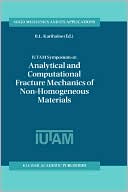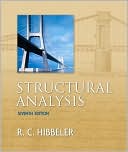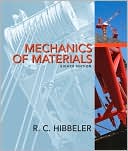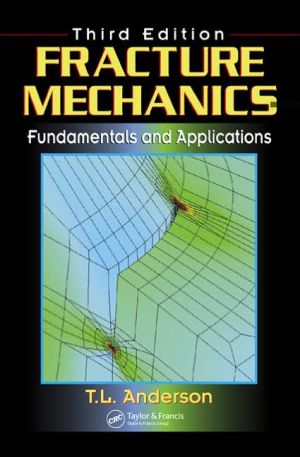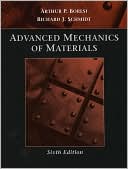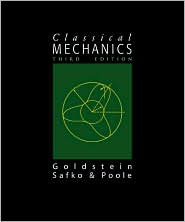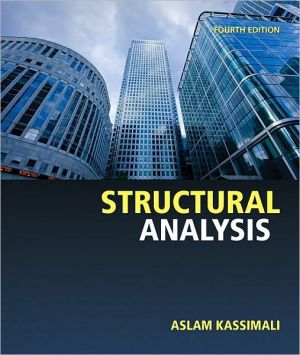IUTAM Symposium on Analytical and Computational Fracture Mechanics of Non-Homogeneous Materials
Search in google:
Contains 55 papers from the June 2001 symposium on the fracture of non-homogeneous materials that are inhomogeneous at the macroscopic level or exhibit strain softening. The contributors report recent advances in applying micro-mechanical modeling, macroscopic analysis, and meso-scale lattice modeling to reveal the micro-mechanisms underlying fracture, and explore the role of inhomogeneities, interfaces, scaling laws, and non-local effects. Other topics include the effect of inhomogeneous rock properties on the stability of well bores, the viscoelastic fracture and indentation of sea ice, fiber failure due to thermal stresses in polymer-based composites, and modeling of R-curves from measured bridging laws. No index is provided. Annotation (c)2003 Book News, Inc., Portland, OR
PrefaceixFeatures and ellipticity analysis of a discrete constitutive equation1Finite fracture mechanics - Application to the onset of a crack at a bimaterial corner11Elastic-plastic stress singularity near a bonded interface19Viscosity-dominated regime of a fluid-driven fracture in an elastic medium25Modelling failure mechanisms in laminated composites31The influence of fiber on the structural response of reinforced concrete beams41Materials with novel architectonics: assemblies of interlocked elements51Asymptotics of elastic field near the tip of interface crack under nonclassical transmission conditions57Scaling in multiple fracture and size effect63Mechanics of fractal materials73Fractal aspects of fracture simulation83Filling of a circular crack with two non-miscible fluids89Effect of inhomogeneous rock properties on the stability of wellbores95The interplay of material and geometric instabilities in large deformations of viscous rock105A displacement rate dependent softening model applied to the unstable propagation of shear crack in soft rock117Fractures and defects in Cosserat continua modelling layered materials127Modeling thin inclusions in poroelastic medium by line discontinuities133Cleavage fracture in "heterogeneous" steel microstructures143Modelling delayed hydride cracking in zirconium alloys155Multiscale modeling of crack growth in polycrystals167The viscoelastic fracture and indentation of sea ice177An enriched finite element method for dynamic crack propagation187Modeling of early-age fracture of shotcrete: application to tunneling197Modelling of progressive interface failure under monotonic and cyclic loading211Crack kinking from an initially closed interface crack in the presence of friction223Elasto-plastic interface laws for non-homogeneous materials: formulation, sensitivity analysis and parameter identification233Analytical and discrete modeling of transformation toughening243The influence of boundary conditions on the non-local response of a randomly heterogeneous medium249Dynamic crack growth along interfaces261A thermodynamic plasticity formulation with local and non-local internal variables271Multi-scale energy release rate in dynamic crack growth of strain-softening materials281Analysis of cohesive cracks under quasi-static and dynamic loading293Material forces in computational fracture mechanics303Shear localisation in thick-walled cylinders under internal pressure based on gradient elastoplasticity313Damage and fracture study of non-homogeneous materials by image correlation computations323Fibre failure due to thermal residual stresses in model polymer based composites333A new method to obtain crack surface areas from electromagnetic radiation emitted in fracture: a string of pulses343Determination of cohesive laws for materials exhibiting large scale damage zones349A bio-chemo-mechanics approach to bone resorption and fracture355Numerical study of mixed-mode fracture in concrete367Thermodynamics of a multi component crack model377Failure assessment of anchor bolts by means of nonlinear finite element analysis387An interface model for fibre reinforced concrete395Gradual degradation of initially porous polycrystalline ceramics subjected to quasistatic tension4013D studies of ductile failure in particulate reinforced metals407Modeling deformation and damage in particle-reinforced composites: the effect of superposed hydrostatic pressure417Understanding failure of heterogeneous materials from the analysis of discrete disordered systems427Photonic band gaps for fields in continuous and lattice structures437Effects of shear and rotation on the mechanical behaviour of interphase447Modelling of R-curves from measured bridging laws453Interfacial crack depinning459Analysis of 3D crack propagation in random lattice structures with particle overlay471A novel technique for the generation of failure criteria for jointed rock481Nonlinear wave propagation in porous materials487An improved lattice model for fracture and size effect of concrete structures493AppendixThe Scientific Programme507
